
The Parallactic Mode, 2011, Installation view, the Fisher Landau Center for the Arts, Long Island City, New York
The title for the Installation is based off of a Parallax, one of the most ancient methods that have been used by astronomers to calculate distances to celestial objects from Earth. Finding a parallax means to chart the location of an object, move your body in space, and then chart the object again. By finding the difference between the object's locations on the chart in relation to your body, you can tell how far away it is from you. This is how I would like the viewer to engage the installation.
The Parallactic Mode is arranged to present the viewer with different methods of perception and analysis of the works, dictated by the relation of each piece to the body. As the viewer moves through the space, certain positions will present a new informative moment about the structure or geometry of the shapes. The further into the installation you go, the more you can gain from the work.

Tetrahedron (Augmented Truncated), 2011, Clay, glaze and graphite, 39 x 23 x 25 in.
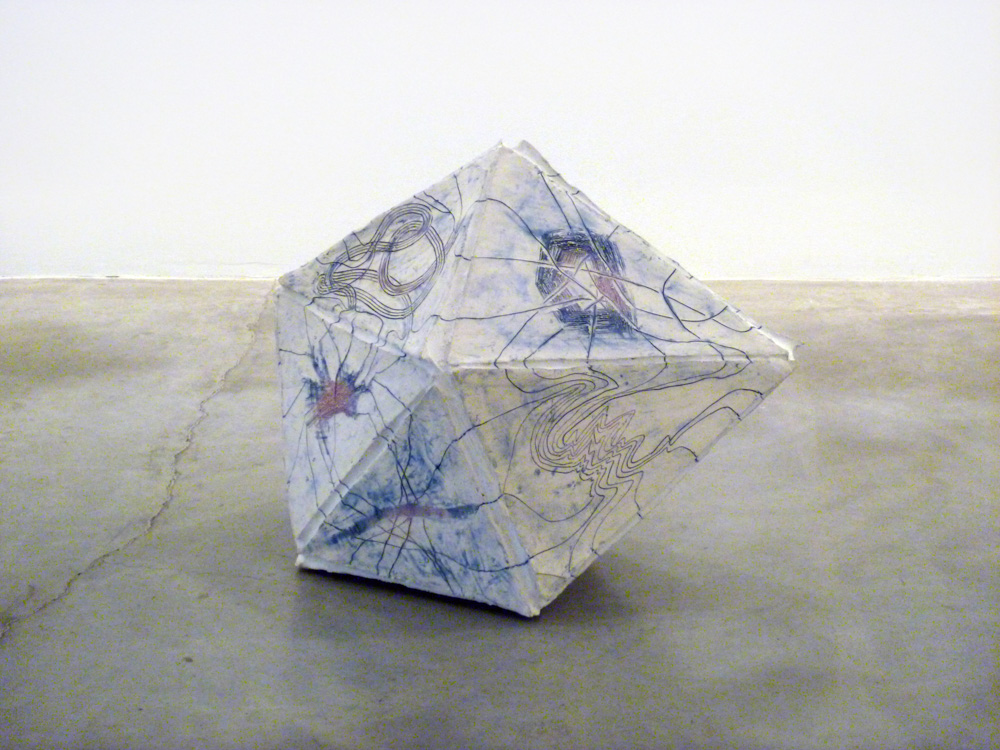
Prism (Triaugmented Triangular), 2011, Clay and glaze, 27 x 32 x 24 in.
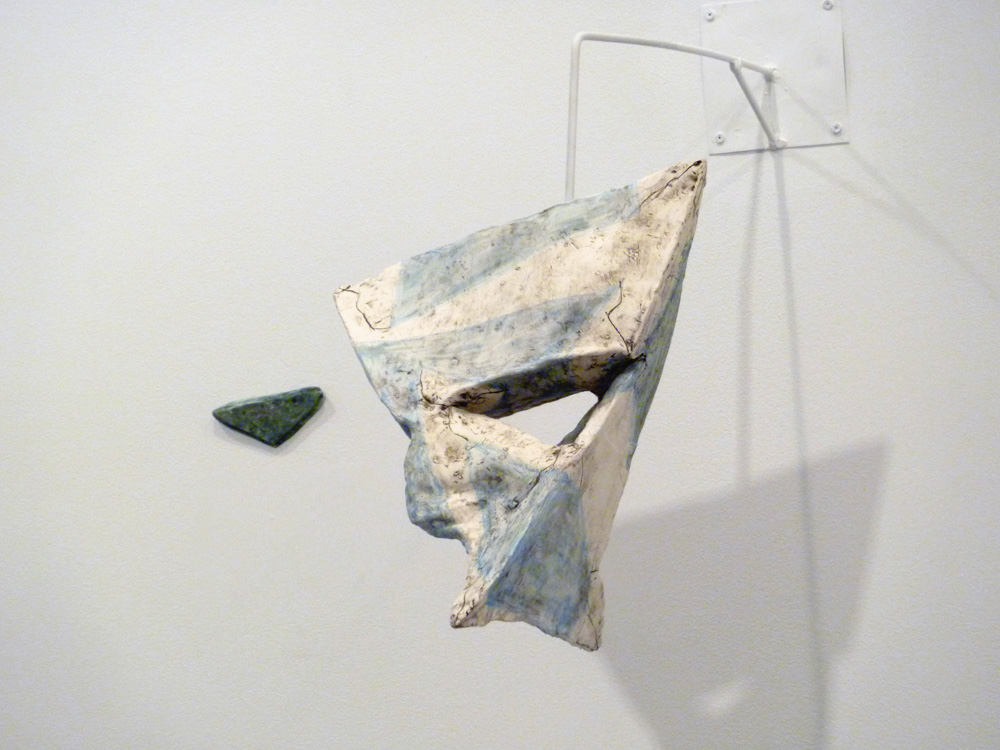
Szilassi Polyhedron, 2011, Clay, glaze and graphite, 15 x 12 x 15 in.
When viewed from a specific distance and angle from the piece, the hole in the sculpture is aligned with the shape on the wall. When standing in this “sweet spot”, the viewer can then face towards Heptahedron Set (Transparency, Up and Down) and the markings on the piece simultaneously line up to show the hidden dimensions (the back corner) of the works. These vantage points are intended to create a tension between personal “dogma” and point of view in relation to the General Principal of Relativity which states that all positions and points of reference are equivalent under the laws of physics.

Path Maps #1, 2011, Clay and glaze, 15 x 23 in.

Installation view: Path Maps #1, 10-D Cube (looped video animation projected onto a clay tablet) and Tetrahedron (Truncated) with Pyramid.
10-D Cube is an animation projected onto a clay slab. As the animation moves forward, its lines connect to the pre-existing drawing, and then loops by going in reverse. 10-D Cube is taking the original structure of a Tesseract (a four dimensional cube) and following the same method, continues to add on “dimensions” in time. The result is the build-up of information becoming so dense that the viewer loses track of what they are looking at.

Tetrahedron (Truncated), 2011, Clay with glaze, 22 x 25 x 21 in.

The Parallactic Mode, 2011, iInstallation view, the Fisher Landau Center for the Arts
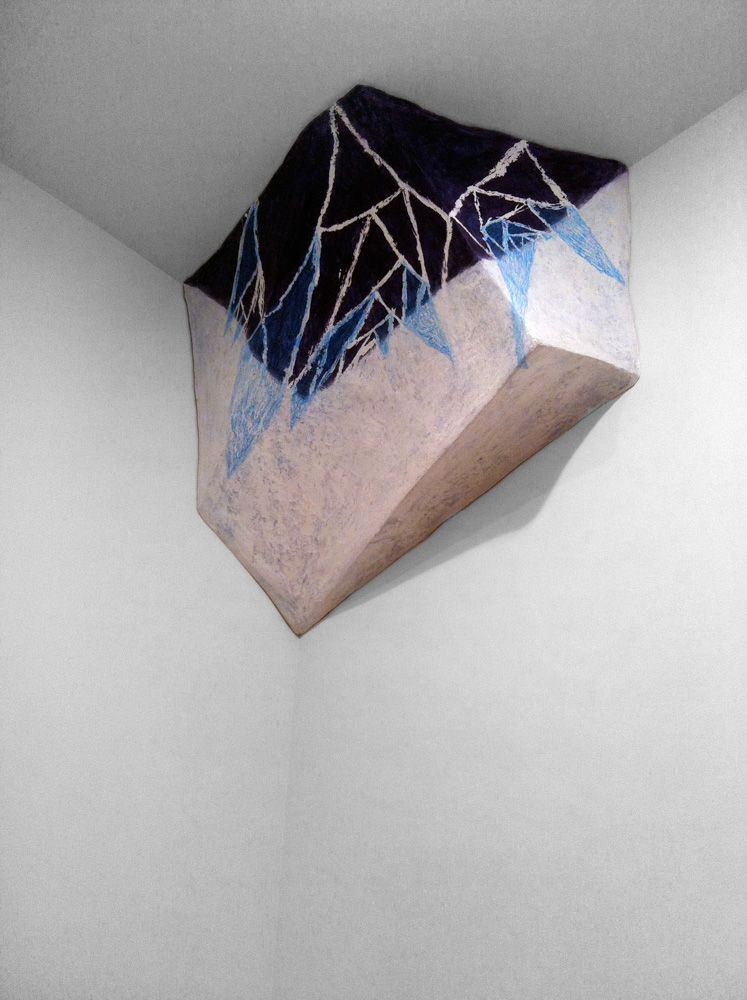
DETAIL: Heptahedron Set (Transparency, Up and Down), 2011, Papermâché, acrylic and graphite, 134 x 46 x 23 in.

The Parallactic Mode, 2011, installation view, the Fisher Landau Center for the Arts
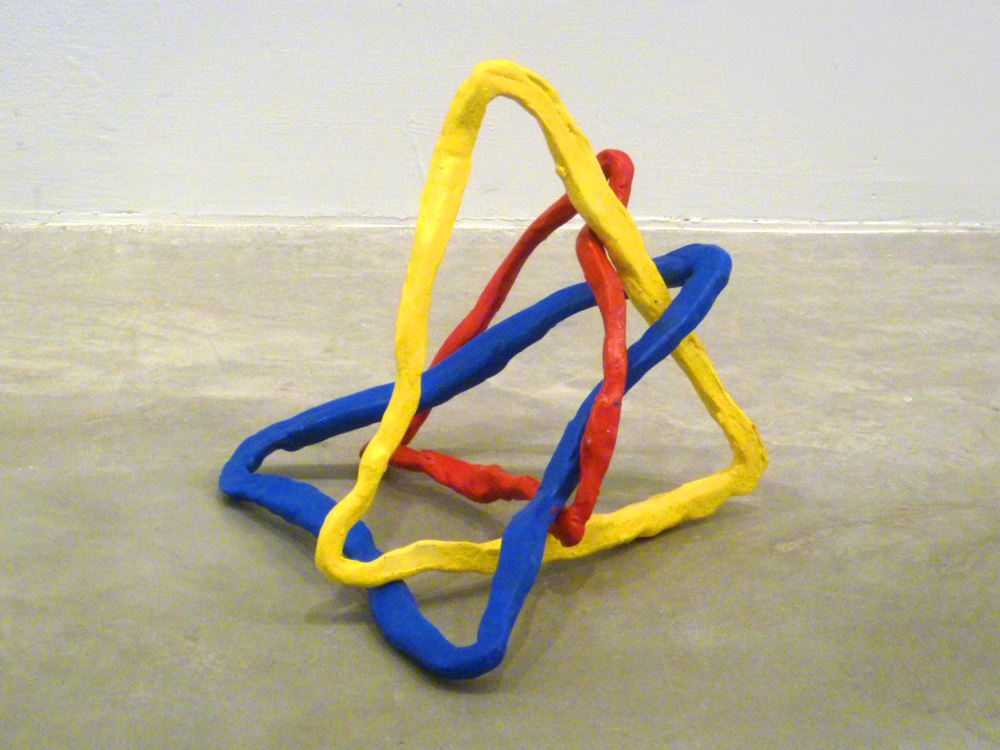
Borromean Ring Variation #1, 2011, Clay with acrylic, 12 x 12 x 12 in.
Boromean knots consist of three topological circles which are linked in a way that no circle actually intersects any other. In other words, removing any ring results in two unlinked rings. As a two dimensional figure, this knot appears to be geometrically sound. However, this link can not be formed from perfectly round 2D circles. In this way, it’s an impossible object.
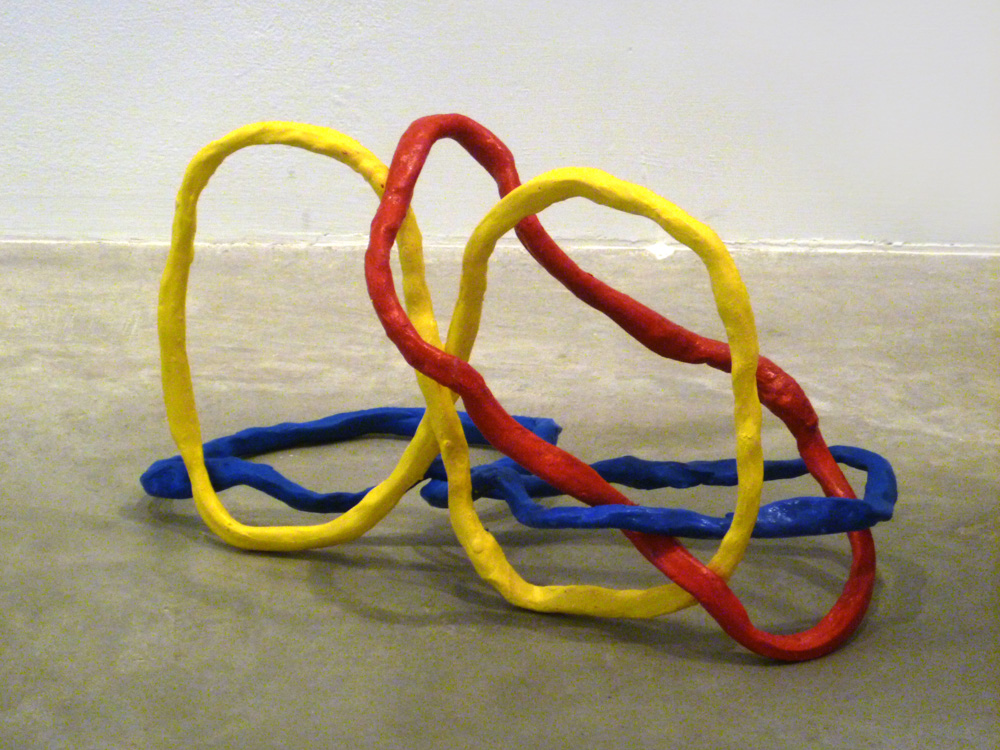
Borromean Ring Variation #2, 2011, Clay with acrylic, 12 x 12 x 12 in.
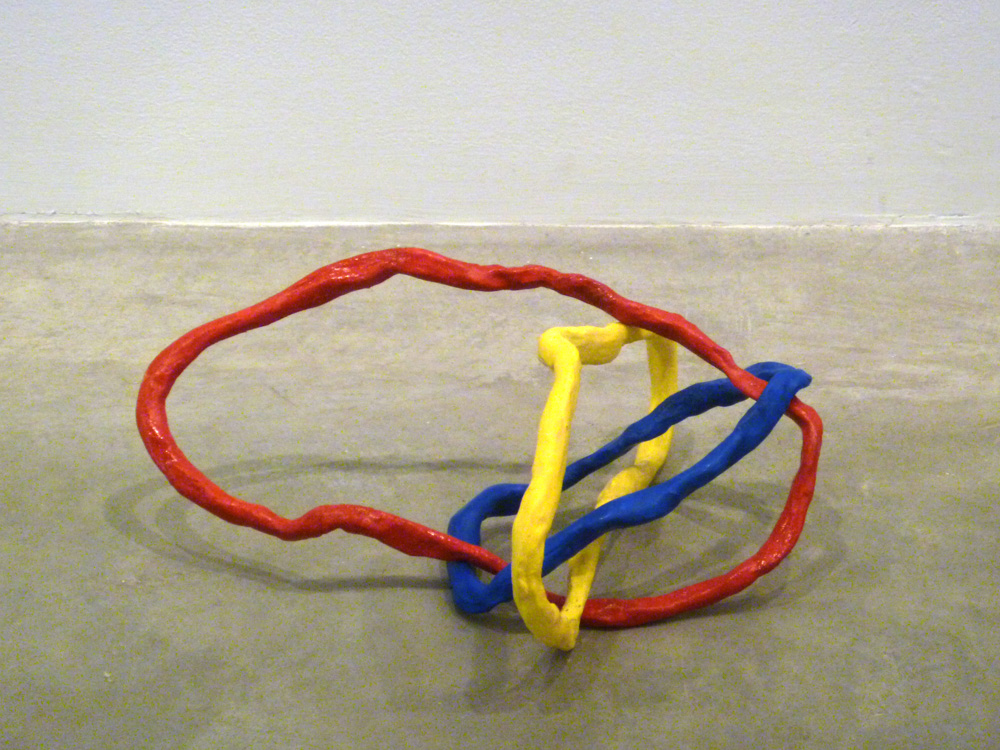
Borromean Ring Variation #3, 2011, Clay with acrylic, 12 x 12 x 12 in.
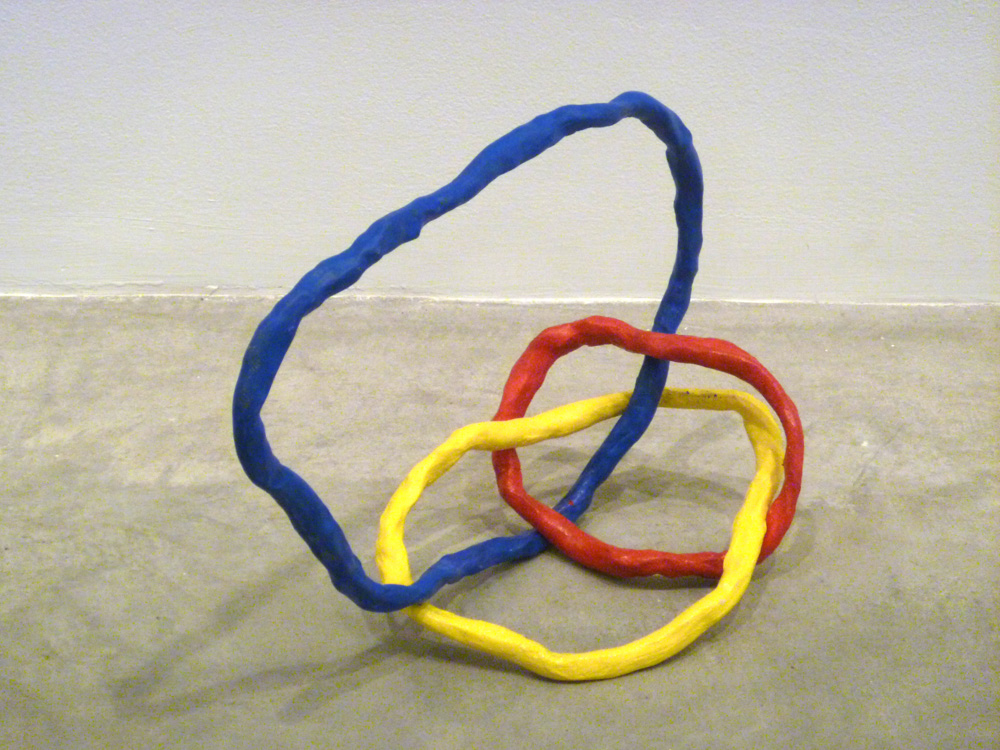
Borromean Ring Variation #4, 2011, Clay with acrylic, 12 x 12 x 12 in.

Borromean Ring Variation #5, 2011, Clay with acrylic, 12 x 12 x 12 in.
The Parallactic Mode, 2011, Installation view, the Fisher Landau Center for the Arts, Long Island City, New York
The title for the Installation is based off of a Parallax, one of the most ancient methods that have been used by astronomers to calculate distances to celestial objects from Earth. Finding a parallax means to chart the location of an object, move your body in space, and then chart the object again. By finding the difference between the object's locations on the chart in relation to your body, you can tell how far away it is from you. This is how I would like the viewer to engage the installation.
The Parallactic Mode is arranged to present the viewer with different methods of perception and analysis of the works, dictated by the relation of each piece to the body. As the viewer moves through the space, certain positions will present a new informative moment about the structure or geometry of the shapes. The further into the installation you go, the more you can gain from the work.
Tetrahedron (Augmented Truncated), 2011, Clay, glaze and graphite, 39 x 23 x 25 in.
Prism (Triaugmented Triangular), 2011, Clay and glaze, 27 x 32 x 24 in.
Szilassi Polyhedron, 2011, Clay, glaze and graphite, 15 x 12 x 15 in.
When viewed from a specific distance and angle from the piece, the hole in the sculpture is aligned with the shape on the wall. When standing in this “sweet spot”, the viewer can then face towards Heptahedron Set (Transparency, Up and Down) and the markings on the piece simultaneously line up to show the hidden dimensions (the back corner) of the works. These vantage points are intended to create a tension between personal “dogma” and point of view in relation to the General Principal of Relativity which states that all positions and points of reference are equivalent under the laws of physics.
Path Maps #1, 2011, Clay and glaze, 15 x 23 in.
Installation view: Path Maps #1, 10-D Cube (looped video animation projected onto a clay tablet) and Tetrahedron (Truncated) with Pyramid.
10-D Cube is an animation projected onto a clay slab. As the animation moves forward, its lines connect to the pre-existing drawing, and then loops by going in reverse. 10-D Cube is taking the original structure of a Tesseract (a four dimensional cube) and following the same method, continues to add on “dimensions” in time. The result is the build-up of information becoming so dense that the viewer loses track of what they are looking at.
Tetrahedron (Truncated), 2011, Clay with glaze, 22 x 25 x 21 in.
The Parallactic Mode, 2011, iInstallation view, the Fisher Landau Center for the Arts
DETAIL: Heptahedron Set (Transparency, Up and Down), 2011, Papermâché, acrylic and graphite, 134 x 46 x 23 in.
The Parallactic Mode, 2011, installation view, the Fisher Landau Center for the Arts
Borromean Ring Variation #1, 2011, Clay with acrylic, 12 x 12 x 12 in.
Boromean knots consist of three topological circles which are linked in a way that no circle actually intersects any other. In other words, removing any ring results in two unlinked rings. As a two dimensional figure, this knot appears to be geometrically sound. However, this link can not be formed from perfectly round 2D circles. In this way, it’s an impossible object.
Borromean Ring Variation #2, 2011, Clay with acrylic, 12 x 12 x 12 in.
Borromean Ring Variation #3, 2011, Clay with acrylic, 12 x 12 x 12 in.
Borromean Ring Variation #4, 2011, Clay with acrylic, 12 x 12 x 12 in.
Borromean Ring Variation #5, 2011, Clay with acrylic, 12 x 12 x 12 in.














